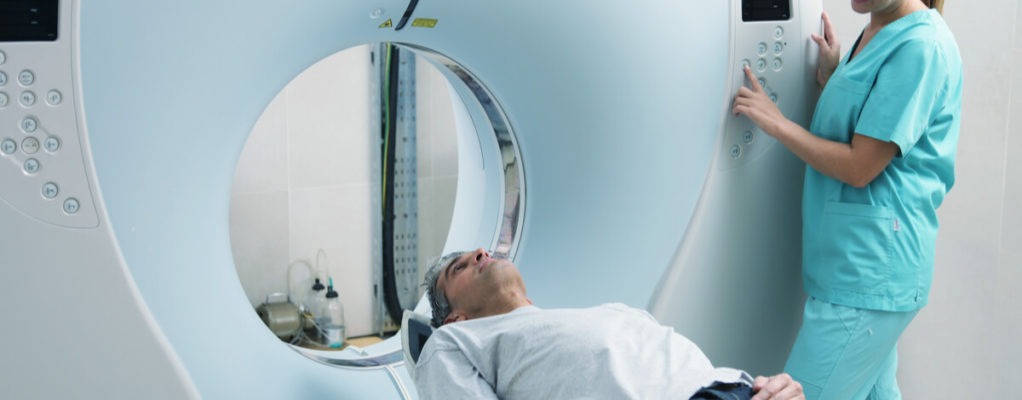One of the most promising new treatments for mesothelioma is proton therapy. This treatment delivers targeted doses of radiation to cancerous tumors while minimizing side effects and damage to healthy organs. Get the facts about mesothelioma proton therapy below.
1. Mesothelioma Proton Therapy Is a Type of Radiation Therapy
Proton therapy is just one of several types of radiation therapies used to treat mesothelioma.
In radiation therapy, doctors use high-energy rays to kill cancer cells. Radiation therapy destroys the cells’ ability to multiply.
Doctors can use several different types of radiation to kill cancer cells, most notably X-rays. However, proton therapy is becoming a more mainstream treatment because it presents fewer risks.
The American Society of Clinical Oncology (ASCO) broke down why proton therapy may be safer for cancer patients.
“With proton therapy, there is less radiation dose outside of the tumor. In regular radiation therapy, X-rays continue to give radiation doses as they leave the person’s body. This means that radiation damages nearby healthy tissues, possibly causing side effects.”
– ASCO
Proton therapy came into use as a cancer treatment in 1954. It gained approval from the U.S. Food and Drug Administration (FDA) in 1988. Today, researchers continue to perfect proton therapy to treat cancer patients more effectively.
The latest development in proton therapy is called pencil-beam scanning (PBS). Using PBS proton therapy, doctors have more control over the radiation dose a patient gets than ever before.
“No two tumors are identical, so we customize the proton beam to target a patient’s unique tumor location, size, and shape.”
– Dr. Steven Frank, Professor of Radiation Oncology
2. Mesothelioma Proton Therapy Has Many Uses
Proton therapy is an attractive mesothelioma treatment option because of its targeted delivery of radiation. As a result, it can be introduced at different steps in the treatment process.
See when proton therapy may be used below.
First-Line Treatments
First-line treatments are considered the main treatment option that a mesothelioma patient receives.
Radiation therapy has typically been used to supplement other first-line treatments (like surgery or chemotherapy) but recent studies suggest it can be used as a main treatment as well.
Adjuvant Therapy
Adjuvant proton therapy allows doctors to kill any microscopic cancer cells that may have been left behind after a major surgery or another first-line treatment.
Proton therapy often follows the pleurectomy with decortication (P/D) surgery among pleural mesothelioma patients.
Researchers from the Memorial Sloan-Kettering Cancer Center found that adjuvant radiation can slow the cancer’s return. It also improved the survival rate among patients diagnosed with early-stage mesothelioma (before the cancer spread).
Neoadjuvant Therapy
Neoadjuvant therapies are administered prior to first-line treatment. At this time, it is not yet known whether proton therapy has been used as a neoadjuvant treatment for mesothelioma.
That said, other types of radiation are currently used as neoadjuvant treatments, so doctors may also use proton therapy in the future.
3. Proton Therapy Has Fewer Side Effects
Compared to other types of radiation therapy, PBS proton therapy reduces the risk of side effects and collateral damage to the treatment area.
For example, doctors may also use intensity-modulated radiation therapy (IMRT) to treat mesothelioma. Like PBS proton therapy, IMRT can be customized to target a patient’s cancerous tumors. That said, IMRT comes with a risk of poisoning cancer patients.
Recent studies tracked mesothelioma patients who received an extrapleural pneumonectomy (EPP) (a surgery that removes cancer tumors and the lung closest to them) and IMRT.
The studies found that IMRT actually damaged the remaining lung in some cases. This puts the patients at a higher risk of pneumonitis, life-threatening lung inflammation.
Radiation can also damage the heart, spinal cord, liver, and kidneys and cause painful side effects.
Radiation side effects include:
- Skin problems including dryness, blistering, itching, and peeling
- Feeling tired or exhausted
- New cancer to develop (in rare cases)
Early results from an MD Anderson Cancer Center study showed that patients who underwent a P/D and received PBS proton therapy had less radiation in non-cancerous areas than those treated with IMRT.
Additionally, the mesothelioma patients treated with PBS proton therapy did not suffer serious side effects.
4. Mesothelioma Proton Therapy Trials Show Promise
Some mesothelioma patients can access proton therapy through clinical trials. Clinical trials offer access to treatments that are approved for human use but need further study before they are widely used.
So far, researchers have seen encouraging results from mesothelioma proton therapy trials.
A 2019 trial found that proton therapy greatly improved survival times when combined with other treatments. EPP patients who received proton therapy, phototherapy, and chemotherapy had a median survival rate of 30.3 months.
This study was particularly encouraging because the patients were in the late stages of mesothelioma, where treatment options and survival times are limited.
5. Mesothelioma Patients Can Access Proton Therapy
As of 2020, mesothelioma proton therapy is still being studied in clinical trials. More clinical data is required before proton therapy is adopted as a standard treatment for this cancer.
That said, mesothelioma patients may be able to join a clinical trial that tests this treatment by speaking with their doctors. Other treatment options or trials are also available even if a patient is not able to join a proton therapy clinical trial.
Our Patient Advocates can help you learn more about mesothelioma proton therapy and other treatments that may be available. Get our free mesothelioma guide today.










